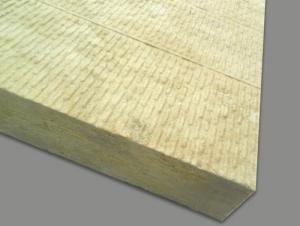When it comes to heating, ventilation, and air conditioning (HVAC) systems, one of the most overlooked yet crucial components is the flexible duct connector. These connectors play a vital role in ensuring the proper airflow within the system, which in turn, affects the overall efficiency and performance of the HVAC unit. In this article, we will explore the importance of flexible duct connectors, the common issues that arise from improper installation, and how to choose the right connectors for your HVAC system.
The Importance of Proper Airflow
Airflow is the lifeblood of any HVAC system. It’s what keeps the air circulating, maintaining a comfortable temperature and providing fresh air to the occupants of a building. Flexible duct connectors are designed to connect various components of the HVAC system, such as the air handler, ductwork, and vents. They are made from flexible materials that can bend and adapt to the layout of the system, making them an ideal choice for installations where rigid ductwork is not feasible.
The Role of Flexible Duct Connectors
Flexible duct connectors are not just a convenient option; they are essential for maintaining the integrity of the airflow. They compensate for any irregularities in the duct system, such as bends, turns, or expansions, ensuring that the air moves smoothly and efficiently. Without proper connectors, the air can become obstructed, leading to reduced efficiency, increased energy consumption, and uneven temperatures throughout the building.
Common Issues with Improper Installation
One of the most common issues with HVAC systems is improper installation of flexible duct connectors. This can lead to a variety of problems, including:
– Leakage: If the connectors are not sealed properly, air can leak out, reducing the efficiency of the system.
– Noise: Loose or improperly installed connectors can cause rattling or other noises that can be distracting and annoying.
– Mold and Mildew: Damp or moist conditions can lead to the growth of mold and mildew, especially if the connectors are not properly sealed.
– Reduced Lifespan: Improper installation can also lead to a shorter lifespan for the connectors and the HVAC system as a whole.
Choosing the Right Connectors
Selecting the right flexible duct connectors is crucial for the performance and longevity of your HVAC system. Here are some factors to consider when choosing connectors:
– Material: Different materials have different properties. Some are more resistant to heat, while others are better suited for damp environments.
– Size: Ensure the connectors match the size of your ductwork to ensure a proper fit and seal.
– Flexibility: The level of flexibility needed will depend on the layout of your HVAC system.
– Fire Resistance: Some connectors are made from fire-resistant materials, which can be an important safety feature.
– Certifications: Look for connectors that meet industry standards and have been certified by recognized organizations.
Installation Best Practices
Proper installation is key to getting the most out of your flexible duct connectors. Here are some best practices to follow:
– Inspect: Before installation, inspect the connectors for any damage or defects.
– Clean: Ensure the surfaces where the connectors will be installed are clean and free of debris.
– Measure: Accurately measure the length and diameter of the ducts to ensure a proper fit.
– Seal: Use appropriate sealants and techniques to ensure a tight seal between the connector and the ductwork.
– Secure: Make sure the connectors are securely fastened to prevent any movement or vibration.
– Test: After installation, test the system to ensure there are no leaks or issues with airflow.
Maintenance and Inspection
Regular maintenance and inspection of your HVAC system, including the flexible duct connectors, is essential. This can help identify any potential issues before they become major problems. Some maintenance tasks include:
– Visual Inspection: Regularly check the connectors for any signs of wear, damage, or leaks.
– Cleaning: Keep the connectors and surrounding areas clean to prevent the buildup of dust and debris.
– Tightening: Check and tighten any fasteners to ensure the connectors remain secure.
– Replacing: Replace any damaged or worn connectors to maintain the integrity of the system.
The Impact of Neglect
Neglecting the flexible duct connectors in your HVAC system can have serious consequences. It can lead to decreased efficiency, higher energy bills, and a less comfortable living or working environment. Moreover, it can also shorten the lifespan of your HVAC system, leading to more frequent and costly repairs or even a complete system replacement.
Conclusion
Flexible duct connectors may not be the most glamorous part of an HVAC system, but they are undoubtedly one of the most important. By understanding their role, choosing the right connectors, and following proper installation and maintenance practices, you can ensure the proper airflow and optimal performance of your HVAC system. So, the next time you think about your HVAC system, don’t forget about the humble yet vital flexible duct connector.

